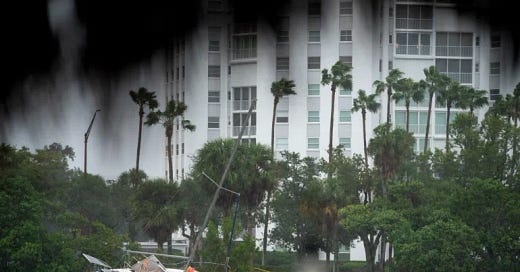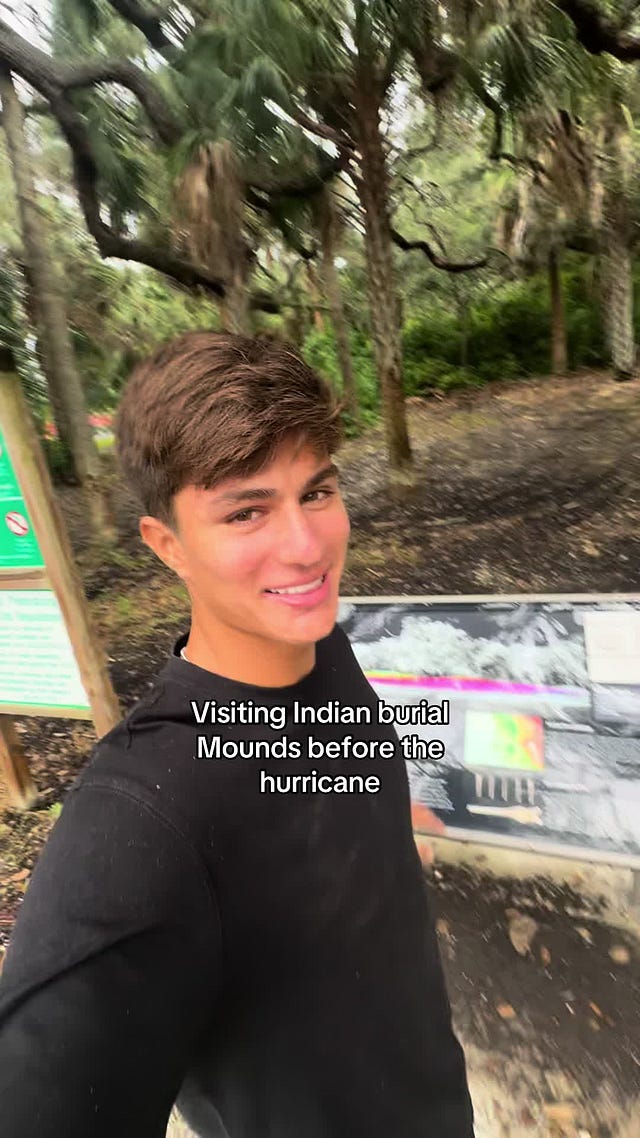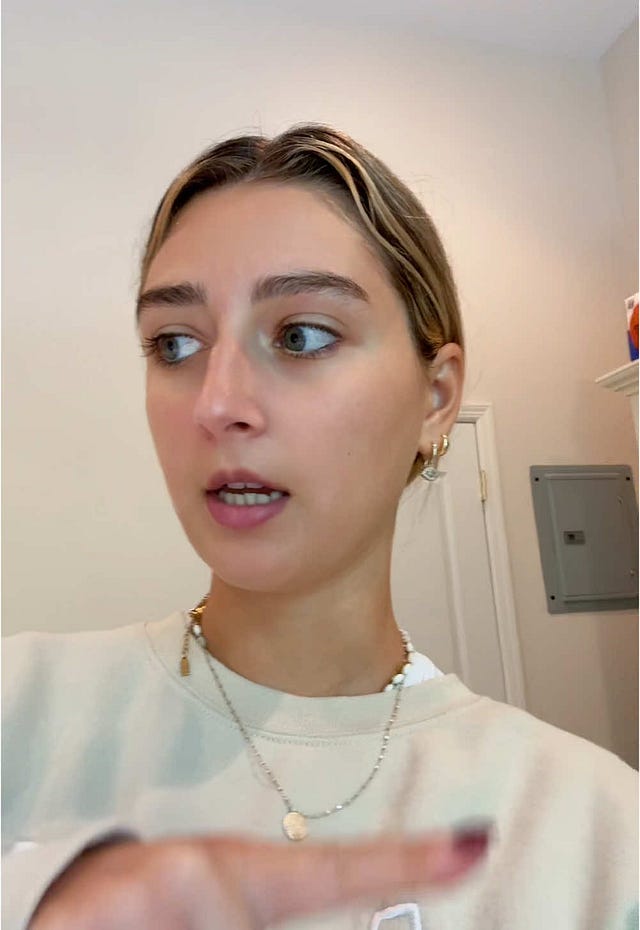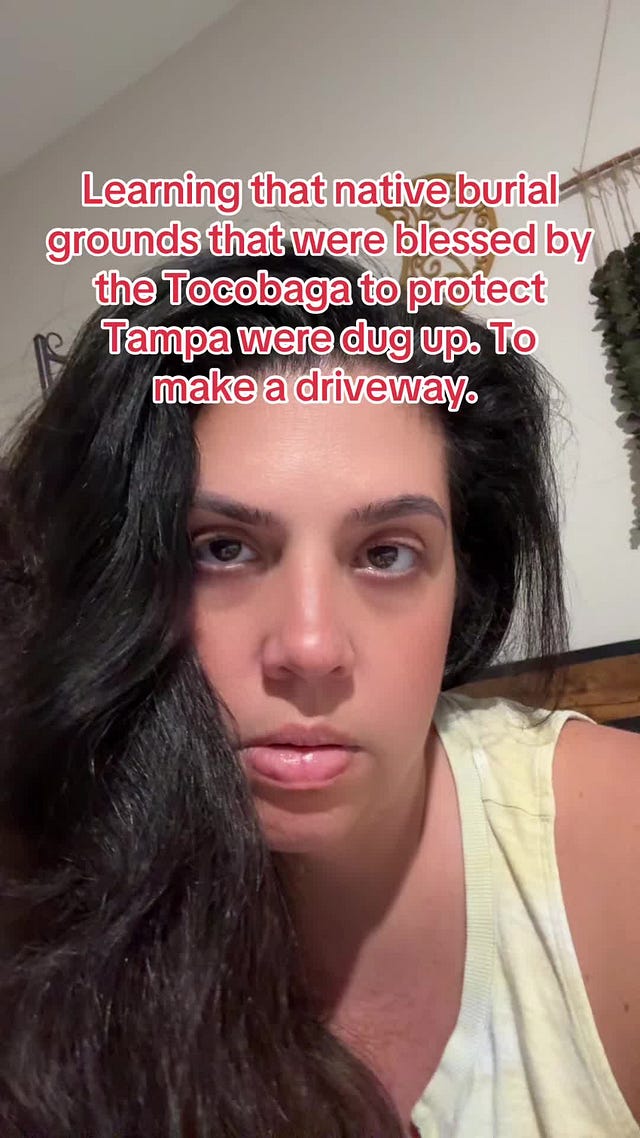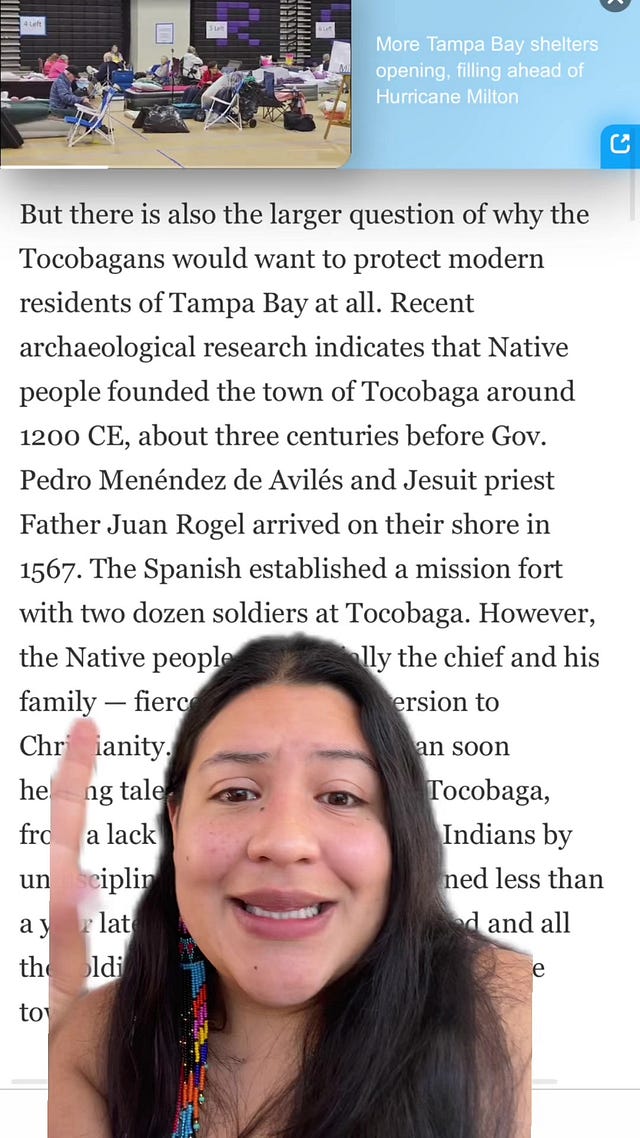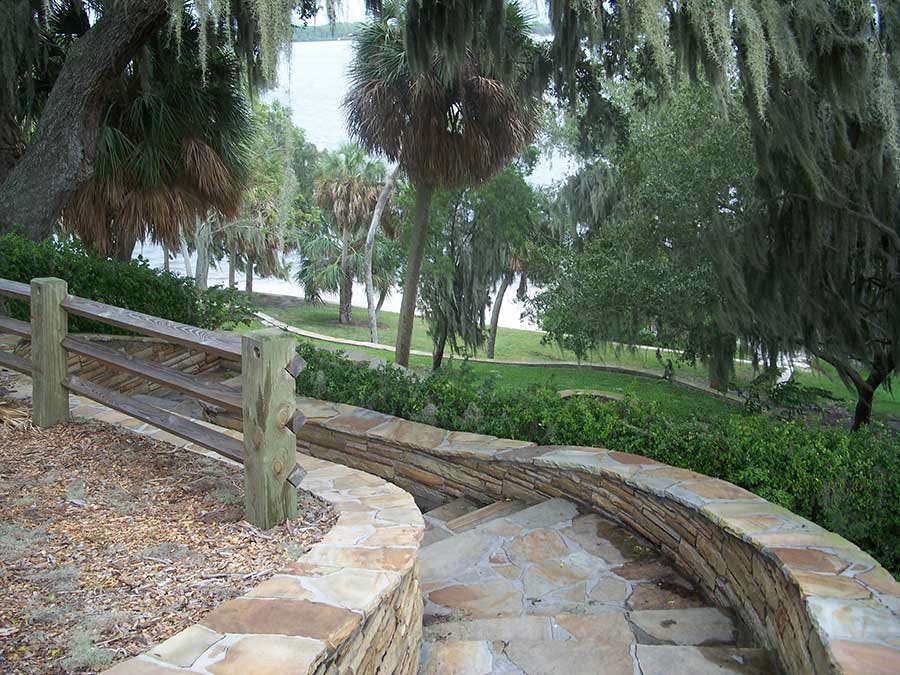The Real Story Behind The Viral Tampa Bay Tocobaga Legend Amid Hurricane Milton
So, here’s the breakdown–we need to talk about those influencer videos.
Like what you read? Liking posts on Substack, sharing, and subscribing are all much appreciated ways to support the work of Words From My Wits’ End. Talk soon<3
Less than a week after Hurricane Helene’s path of destruction across Appalachia, an even larger storm appeared out of the blue. Hurricane Milton was one of the largest hurricanes the Western Hemisphere has seen in recent history.
After the devastation of Helene, Florida found itself at the eye of the storm. The Mayor of Tampa appeared on CNN, where she solemnly told Kaitlan Collins that the people of Tampa need heed one final warning– “if you stay, you’re going to die.”
With an air of existentialism hanging over the state of Florida, Tampa locals relied on a local legend–that hurricanes typically veer off course from Tampa Bay at the last possible second, all because the Tocobaga tribe, who once lived on the land, provided a blessing to protect them from the violent storms.
Locals place offerings of flowers and fruits at the indigenous burial ground, composed of a series of shell mounds that have survived for centuries. These offerings are gaining viral attention on TikTok, which quickly became the primary source of information for both Floridians looking for immediate news updates and outsiders seeking education about the storm and its aftermath.
 Tiktok failed to load.
Tiktok failed to load.Enable 3rd party cookies or use another browser
This legend haunts Tampa Bay, which, in reality, conceals a hundreds year old massacre of an entire indigenous people by way of warfare and disease. Now, separate from the Caroline Calloways of the internet, some young (and predominantly white) influencers are sharing on TikTok that they believe Hurricane Milton is a result of someone tampering with the burial mounds. Many claim that a body was dug up recently, and must be the reason for the storm.
The Tampa Bay Times last reported of an incident such as this 24 years ago near Hidden Lake. The most recent incident of tampering with indigenous burial sites in Florida happened last year in Saint Petersburg during a home renovation, and therefore not connected to the site that many TikTok creators are visiting. On a scientific level, Hurricane Milton’s severity is a result of climate change, a new study conducted by World Weather Attribution discovered.
While the TikTok influencers appear to hold reverence for indigenous customs, many of them bear very little research, creating a sense of performative activism. Now, the indigenous community is shedding light on their perspective on this local lore.
Laura C. (who requested her last name be redacted for privacy), an indigenous Colombian woman raised on the sprawling Cherokee lands of Appalachian North Carolina, maintains a TikTok following of over 175,000, where she shares educational content on the indigenous peoples of the Americas and raises awareness for MMIW (Missing and Murdered Indigenous Women). She additionally runs a business called Pülasü Co., where she works with Colombian artisan women on cultural jewelry pieces. Laura felt called to embrace her own indigenous roots and learn more about her lineage when she lost her grandfather several years ago.
Last week, Laura shared a now viral video educating people on the truth behind the Tampa Bay Tocobaga’s history, and how to generally observe indigenous traditions respectfully. Most notably, Laura cautioned against the use of the term “Indian,” instead favoring the use of “indigenous” or “native.” In Laura’s now viral video, she additionally mentioned that the Tocobaga should not be referred to as “extinct,” as they are truly regarded as the ancestors of Tampa Bay’s Seminole people.
Raised in North Carolina and recently having weathered Hurricane Helene, Laura immediately took notice of the ongoing trend surrounding the Tampa Bay legend.
“I went on a deep dive because I was interested too, since our sacred burial grounds have been disturbed in the past. I especially went to research further after seeing a lot of videos of people going to the mounds and blessing it with white sage, which is an oxymoron, because white sage is a closed practice that continues to be gentrified,” said Laura.
In the era of new age spirituality, indigenous people encourage practitioners to research the sacred rituals associated with native culture, and not participate in closed practices. While well intentioned, the Tampa Bay locals sharing viral videos of offerings for the local spirits might not be aware of the true rich cultural history of the land. “Our culture, our traditions, our jewelry, our everything is kind of romanticized in a way, especially in American culture, and so maybe that's why people are taking an interest. They could be paying their respects, but the situation is still a little funky,” Laura said.
Upon looking into the local history of Tampa Bay, Laura found that even if the stories were true, the Tocobaga spirits were unable to deter a catastrophic storm in 1848–the Great Gale. The Gale appeared to destroy the few remaining pieces of the Tocobaga town, which had already been ravaged by European colonization and disease.
“This immediately raised questions surrounding the origin of this superstition. It could be real, right? But if they couldn't protect their land in that specific scenario, why would they protect it now? I do know that there are many indigenous people that believe that the spirits of the land may be protecting the land itself instead of the people. There are many different theories, and I’m happy to see people sharing their ideas in my comment section,” said Laura.
Laura feels inclined to agree with the land protection theory, as an indigenous woman who seeks to decolonize western notions of native people. “Why would they protect these people who destroyed their land? It was built on top of the bones of their people. I have one way of thinking, but it's very interesting to see others sharing their thoughts,” said Laura.
“Why would they protect these people who destroyed their land? It was built on top of the bones of their people.”
Some took to Laura’s comments to theorize that perhaps the ancestors are taking their land back by way of storms. Laura shared an anecdote from her small mountain hometown about Hurricane Helene that could support this indigenous belief.
“Hurricane Helene hit right along the Qualla Boundary, which is pretty much the Cherokee reservation. The Qualla Boundary was completely spared, and this area contains the 57,000 acres of land that still belongs to the Cherokee people. As the people in this region would say, this might have been the Thunder Beings protecting the land and causing havoc to intentionally wake people up to the destructive path we are heading down as humans.”
When it comes to the lack of education surrounding the Tocobaga legend, Laura acknowledges that the American education system has work to do when it comes to indigenous education in the classroom. Should schools spend more time on the local indigenous peoples, those who choose to visit sacred burial sites can do so accurately.
Laura said, “Learning the true history of the United States, I think, helps put all of these little perspectives into place. It’s important to acknowledge that maybe these burial grounds don't protect the way people think they do. I'm sure the ancestors of these people are angry–there was a lot of bloodshed on those lands, a lot of hurt and a lot of generational trauma. Respecting and honoring them on their own terms is the path forward.”
Resources for victims impacted by Hurricane Helene and Hurricane Milton can be found here.
This interview has been edited and condensed for clarity.

